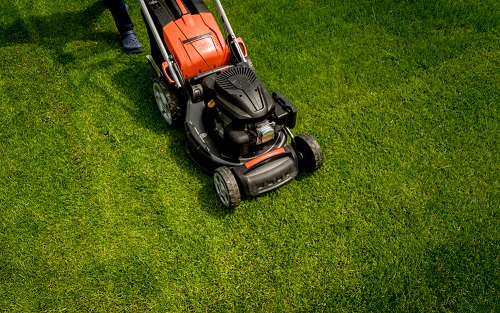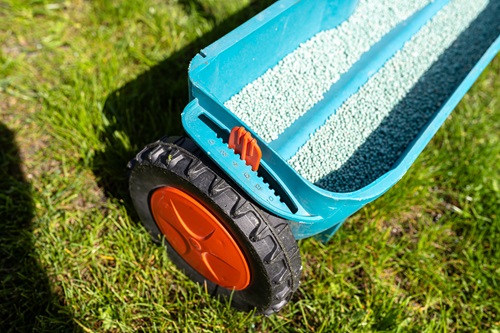
Spring is the best time to prepare your lawn for summer. You can have a healthy, fresh lawn in the spring and enjoy the beautiful weather. With proper lawn care maintenance, your grass will thrive in the spring.
You have two options when it comes to spring lawn care: either hire a professional or take care of it yourself. A lawn care Myrtle Beach expert will identify and perform any spring treatment that your grass requires to keep it beautiful and weed-free throughout the summer.
Conner’s Lawn Care Service offers several spring lawn care tips for those who choose to do it themselves. These spring lawn care tips will ensure that your yard stays lush and green throughout the summer.
Lawn Care Tips You Need To Know
#1: Give your lawn mower a tune-up
Our first spring lawn care tip doesn’t require you to even touch your grass yet. Your lawn will be cut regularly throughout the season, so even if it isn’t ideal, get your mower ready. Pre-prepared lawn mowers will keep your lawn healthy and prevent low cuts or malfunctions that can delay regular mowing. Your lawn mower’s needs will vary depending on how you maintained it in the fall. The basic steps are to change the oil, replace the spark plug, air filter, and balance the blades. This will allow you to be ready for spring by getting your lawn in tip-top shape. Make sure you read and understand all safety information about your lawn mower.
#2: Get rid of winter debris
You don’t know how meticulously you cleaned your yard in fall, but new leaves, sticks and other debris could have made it onto your grass. Your lawn can be affected by wind, rain, snow, and other debris. Some of that debris can be hidden by the snow until spring. It is important to get rid of winter debris every spring. It will be easier to maintain and treat your grass if you take the time to clean it before you start any spring lawn care.
#3: Aerate your Lawn
It is essential to aerate your lawn after storing heavy snow or having heavy traffic. The soil under your grass can become compacted, especially if it was covered with snow or if you have had a lot of foot traffic. Aeration loosens the turf, allowing water and air to reach the soil and roots of your grass. Although it is not necessary, you should still evaluate your lawn for any areas that are too compacted.
#4: Start overseeding your lawn
You may have bare spots on your lawn and need to overseed your lawn in spring. To help your lawn grow new grass patches, you can apply grass seed. It can be challenging to work with grass seed alone. Talk to Conner’s Lawn Care Service to find out how much seed you need and how to water it. Also, when is the best time to plant your grass seeds. Our lawn maintenance professionals can provide guidance on how to manage your lawn and keep it healthy.
#5: Take a look at your soil
It is time to look at your soil after a long winter and determine what you need to encourage grass growth. Soil care is the first step in lawn care. To determine how acidic your soil is, you should test it. The pH of grass is neutral. If your soil is too acidic, it can make it difficult for your grass grow back. Once you know what your lawn needs you can begin to add treatments to ensure that you have strong grass all year. A great spring lawn care program is essential.
#6: Enact weed prevention
Pre-emergent weed management is best used in spring. Pre-emergent can be applied before the target weed germinates in your yard. It is an effective preventative measure for annual grassy weeds. Professional lawn care can help you prevent crabgrass and other grassy diseases. Bed weed maintenance can also be a great way to keep your lawn in good shape. The local Lawn Doctor will be able to tell you which weeds are problematic in your area.
#7: Prevent lawn diseases
Are there dead spots on your lawn from the winter? This could indicate lawn disease. Spring is the best time to work on keeping your lawn healthy and preventing lawn disease. A good lawn maintenance program can help rejuvenate your yard. The Lawn Maintainer Care Program will keep your lawn healthy and free from pests.
#8: Mow your lawn and grass-cycle it
Start mowing your lawn once your spring grass has grown. For safety considerations and proper lawn mowing techniques, please see our lawn mowing tips.
Grass-cycling refers to the method of leaving the grass clippings on the lawn. Rather than bagging the clippings and putting them in bags, spread them out on your lawn. This will help to recycle grass elements into the soil and increase your lawn’s water retention. This can give your yard an extra boost in the spring.
#9: Fertilize your lawn
To keep your lawn lush and thick, fertilize it in spring even if you have fertilized in fall. Spring fertilization is a great way to help your lawn grow and replenish its roots. The timing and type of fertilizer you use will depend on your location and the growing conditions. Follow the instructions carefully. You’ll have a lawn you are proud to be able to enjoy in spring if you follow the directions.
#10: Balance your soil and check your pH
The right pH level can make a big difference in how your lawn looks. Lawn Doctor will professionally test your soil and help you decide which treatment is best for your lawn.
Soil enrichment encourages stronger roots and improves the soil structure. This process improves root penetration and soil retention, which makes regular watering easier. Soil enrichment can reduce the amount of salts in the root zone, and it can improve soil aeration.
#11: Keep your eye on your toch level
The soil can become compacted over time and restrict grass’s access nutrients. It also makes it more difficult for soil to absorb water. Thatch can also build up in your lawn. Thatch is made up of both living and decaying plant matter. Thatch can also be caused by grass clippings, which are easily broken down. Although a small amount of thatch is beneficial, too much can lead to root problems. Your spring lawn care should include some relief from thatch and compacted soil. Lawn aeration can help reduce thatch, increase water absorption, and promote grass growth.
#12: Water your lawn
Your lawn will be lush and healthy in the spring. We recommend not watering your grass more than 1 inch per week if it is new grass seed. Overwatering your lawn in spring can result in shallow roots and promote weed growth. Your lawn should be watered only when it is showing signs of drought stress.
Spring is the best season for roots to seek out water and nutrients. This encourages roots to be healthier and more prepared for summer stress. You should not turn your sprinklers on if you live in an area that receives regular rain.
These spring lawn care tips will help you maintain beautiful grass for your family and friends all year.
Contact your local lawn expert for more information about spring lawn care and other lawn care tips. Call Conner’s Lawn Care Service now.
Conner’s Lawn Care Service
Myrtle Beach, SC
843-504-4901
http://connerslawncare.com/

